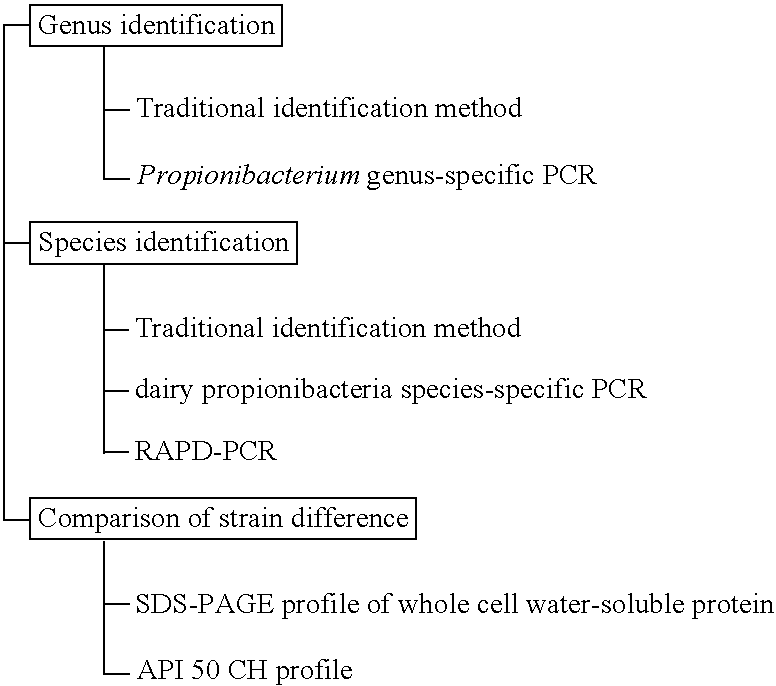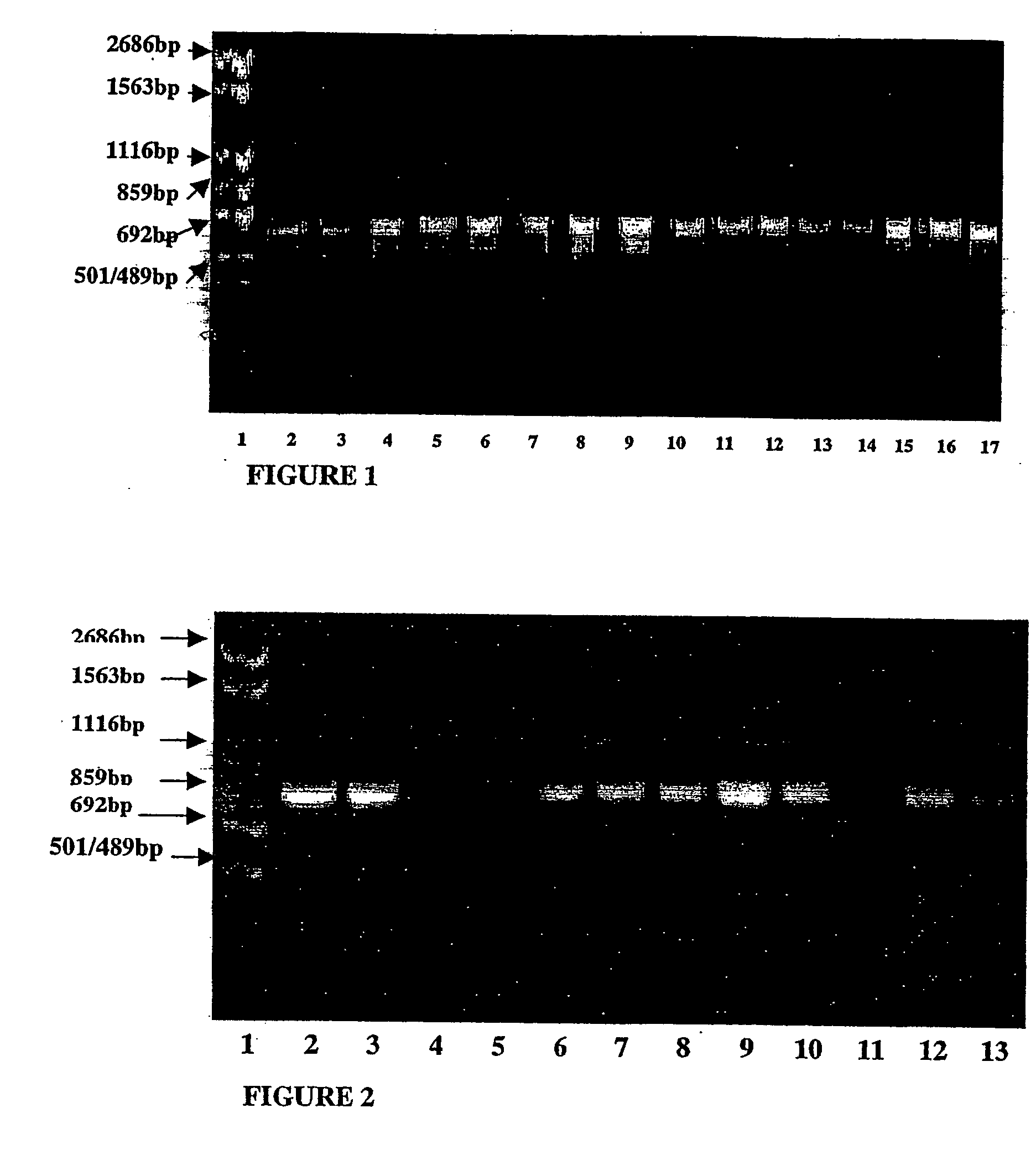Probiotic propionibacterium
a propionibacterium and propionibacterium technology, applied in the field of propionibacterium propionibacterium strains, can solve the problems of limited research into the in vitro acid tolerance of propionibacteria, difficult to study bacterial adhesion in vivo, and inadequate nutritional intake, so as to enhance antigen presentation and immune stimulation, prevent oral tolerance, and high toxicity
- Summary
- Abstract
- Description
- Claims
- Application Information
AI Technical Summary
Benefits of technology
Problems solved by technology
Method used
Image
Examples
example 1
Isolation and Identification of Dairy Propionibacteria Strains from Raw Milk, Cheese and Human Small Intestine Biopsy Samples
[0278] The purpose of this study was to isolate strains of dairy propionibacteria species from raw milk, cheese products and human small intestine biopsy samples, and further identify the isolated strains into species. For this purpose, different identification methods, including traditional identification methods, API 50 CH carbohydrate fermentation profiles, PCR identification methods and whole cell water-soluble protein analysis by SDS-PAGE, were used.
Materials and Methods
Reference Strains
[0279] Reference strains used throughout this study are listed in Table 4.
TABLE 4Details of reference strains usedSTRAINSPECIESSUPPLIERCSCC 2200PropionibacteriumAustralian Starter CulturefreudenreichiiResearch Centre, AustraliaCSCC2201P. freudenreichiiCSIRO Melbourne, AustraliaCSCC2206P. freudenreichiiCSIRO Melbourne, AustraliaCSCC2207P. freudenreichiiCSIRO Melbour...
example 2
Dairy Propionibacteria Simulated Upper Gastrointestinal Transit Tolerance and Adhesion to C2BBE1 Cells In Vitro
[0346] This study aimed to assess in vitro upper gastrointestinal tract transit tolerance and adhesion to human epithelial cells of some dairy propionibacteria strains, which are able to synthesize vitamin B12. For this purpose, the following were examined, (1) the viability of dairy propionibacteria strains in simulated gastric transit conditions (pH2, pH3 and pH4 gastric juices); (2) the influence of vegetarian food on the pH2 gastric transit tolerance of dairy propionibacteria strains; (3) the viability of dairy propionibacteria strains in simulated small intestinal transit conditions; (4) the growth of dairy propionibacteria strains in SLB containing 0.3% bile salt; and (5) the adhesion of dairy propionibacteria strains to cell line C2BBe1, a clone of the Caco-2 cell line.
Materials and Methods
Bacterial Strains
[0347] Thirteen dairy propionibacteria strains were scr...
example 3
Survival, Safety and Probiotic Effects of Orally Administered Viable Propionibacterium Jensenii 702 on Male Wistar Rats
[0397] A novel probiotic strain not only needs to be assessed for its the safety but also the efficacy of its proposed use before its corporation into food products. The aim of this study was to evaluate the safety and potential probiotic effects of P. jensenii 702 using a male Wistar rat model. For this purpose, the following were examined, (1) acute oral toxicity; (2) translocation of bacterial cells to liver, mesenteric lymph nodes and spleen tissues; (3) faecal aerobic and anaerobic bacteria; (4) faecal β-glucuronidase levels; (5) testicular histological changes of rats; (6) adherence of P. jensenii 702 to the small intestine; (7) intestinal content counts of P. jensenii 702; (8) vitamin B12 and homocysteine levels in serum; and (9) total cholesterol and triglycerides.
Materials and Methods
Ethics Approval
[0398] The ethics approval, for this study involving ...
PUM
| Property | Measurement | Unit |
|---|---|---|
| transit time | aaaaa | aaaaa |
| infectious disease resistance | aaaaa | aaaaa |
| size | aaaaa | aaaaa |
Abstract
Description
Claims
Application Information
 Login to View More
Login to View More - R&D
- Intellectual Property
- Life Sciences
- Materials
- Tech Scout
- Unparalleled Data Quality
- Higher Quality Content
- 60% Fewer Hallucinations
Browse by: Latest US Patents, China's latest patents, Technical Efficacy Thesaurus, Application Domain, Technology Topic, Popular Technical Reports.
© 2025 PatSnap. All rights reserved.Legal|Privacy policy|Modern Slavery Act Transparency Statement|Sitemap|About US| Contact US: help@patsnap.com



